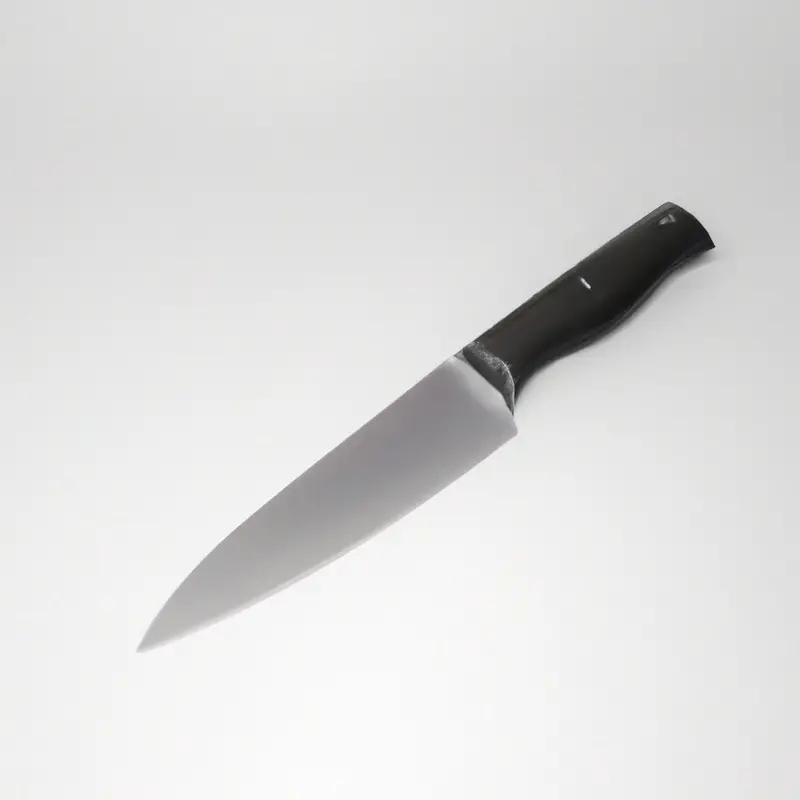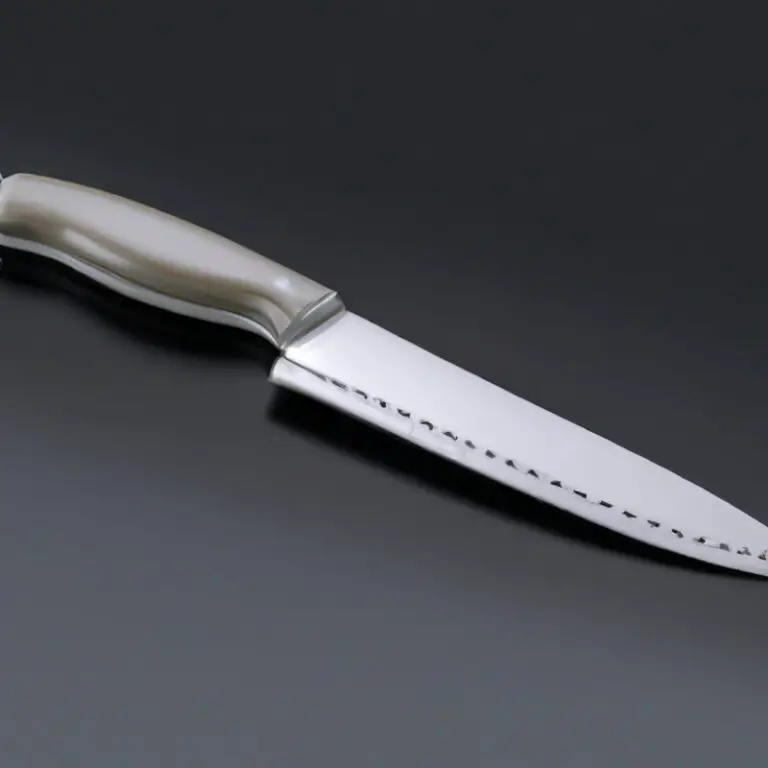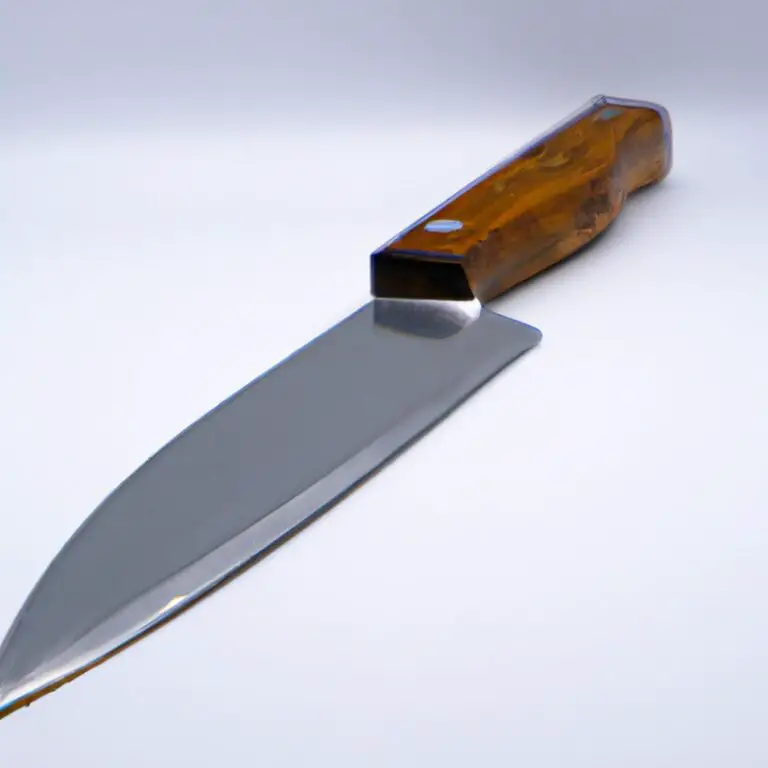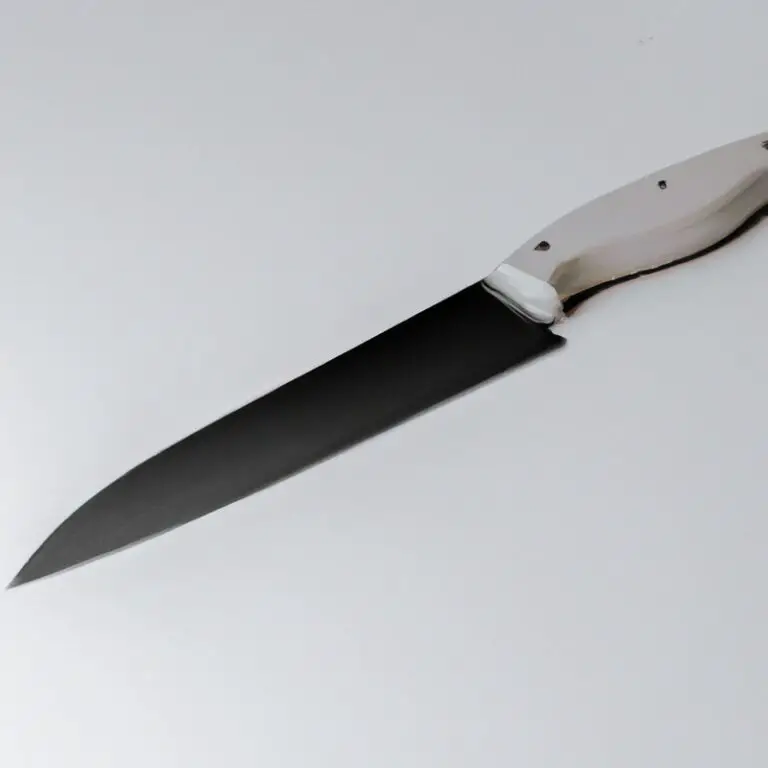How To Safely Transport Chef Knives?
Key Takeaways:
- Use a padded knife case or roll to protect the blade and prevent injuries during transportation.
- Secure the knife case or roll in a sturdy bag or container to prevent it from shifting or rolling around.
- Pack knives separately from other items, such as food or cooking equipment, to avoid damage or contamination.
- Always declare your knives to security personnel when flying to ensure compliance with airline regulations.
As a chef, your knives are some of the most valuable and essential tools in your kitchen. Whether you’re traveling to a culinary competition or heading out to do a private event, your knives must be transported safely and securely.
But how can you ensure that your knives remain in optimal condition during transportation?
In this article, I’ll share some tips and techniques on how to safely transport your chef knives, from selecting the best knife bag to choosing knife guards and securing your knives during air travel. With the right knowledge and preparation, you can transport your knives without any accidental damage.
| No. | Tips |
|---|---|
| 1 | Use a knife roll or a knife case to store and transport chef knives |
| 2 | Wrap individual knives with a blade guard or a towel to prevent damage |
| 3 | Make sure the knife roll or case is securely closed before transporting it |
| 4 | Avoid carrying the knife roll or case by the handle as it may break |
| 5 | Put the knife roll or case in a separate compartment of your bag to avoid bumping into other items |
| 6 | Do not leave the knife roll or case in a hot car as it can damage the knives |
| 7 | Always check local regulations and airline policies before transporting chef knives on a plane |
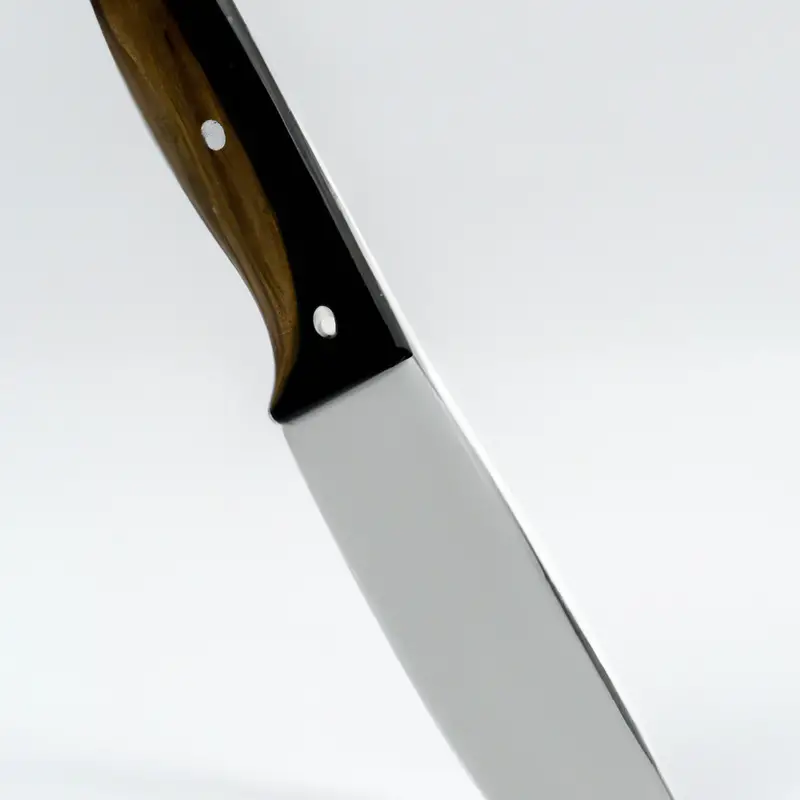
Importance of Proper Knife Storage During Transportation
Proper knife storage during transportation is crucial to ensure the safety of both the chef and the knives. When knives are not stored correctly, they can easily damage other equipment or injure people.
It is essential to store knives in knife bags, rolls, or boxes that can secure them in place during transport.
Many chef knives come with guards that help protect the blade during transportation. If the knives are transported by air, it is crucial to follow the airline’s guidelines on packing knives to avoid them from being confiscated.
It is always best to pack knives in a checked bag and not in a carry-on bag.
After transporting knives, it is vital to clean and sanitize them thoroughly before storing them again. Proper knife storage and transportation techniques should be taught to all kitchen staff to ensure that everyone follows the same procedures for safe transport.
By following proper knife storage techniques during transport, chefs can avoid damaging their valuable tools or injuring themselves or others.
Types of Chef Knives and Their Maintenance Requirements
There are several types of chef knives that are essential in any kitchen. The most common types include the chef’s knife, paring knife, bread knife, boning knife, and cleaver.
Each knife has its specific use that makes it indispensable in the kitchen.
To maintain the quality of the knives, regular sharpening is necessary. Sharpening helps maintain the blade’s sharpness and edge.
Honing, on the other hand, helps straighten the edge, allowing for more precise cuts.
Proper storage is also essential in maintaining the quality of the knives. Storing knives in a magnetic knife holder or a knife block helps protect the blades from damage and keeps them organized.
When transporting the knives, it is crucial to keep them secure to prevent damage.
Using a knife roll-up bag is an excellent way to keep your knives safe during transport. Additionally, using knife guards before placing them in a bag can provide added protection.
In summary, there are different types of chef knives that have specific uses in the kitchen.
Regular maintenance is necessary to maintain the quality of the knives. Proper storage and transportation techniques are also essential to prevent damage to the blades.
Choosing the Best Knife Bag for Safe Transport
When it comes to choosing the best knife bag for safe transport, consider the following factors:
- Material: Look for bags made from durable and water-resistant materials such as nylon or polyester.
- Size: Select a bag that accommodates your entire knife set without overstuffing the bag, which can damage the blades.
- Organization: Choose a bag that separates each knife securely to prevent blades from rubbing against each other.
- Security: Look for knife bags with durable zippers and secure fastenings to prevent knives from falling out or getting lost.
- Comfort: Consider the weight of the bag and ensure the bag you choose has comfortable handles or straps.
Some popular options for chef knife bags include knife rolls, briefcase-style bags, or backpacks. Ultimately, the best option for you will depend on your specific transportation needs.
Securing Knives in a Knife Roll-up Bag
When it comes to securing knives in a knife roll-up bag for safe transport, there are a few key things to keep in mind:
- Make sure the knives are fully dry before packing them away, as any moisture can lead to rust and other damage over time.
- Use the designated slots for each knife, and make sure they fit snugly in their individual compartments.
- If there are any loose areas in the bag, use a kitchen towel or other soft material to provide additional padding and protection for the knives.
- When rolling up the bag, make sure the knives are securely fastened inside and won’t shift around during transport.
Overall, a well-designed knife roll-up bag will do a good job of keeping your knives safe and secure during travel, as long as you take the time to pack them properly and use the appropriate protective measures.
Using Knife Guards for Added Protection
Another way to protect your chef knives during transportation is by using knife guards. These guards are usually made of plastic or silicone and wrap around the blade of the knife.
Knife guards serve two main purposes when it comes to transportation.
Firstly, they prevent the blade from getting damaged or dulled during transportation. Secondly, they provide an extra layer of protection, reducing the likelihood of accidents that could cause injury.
Most knife sets come with their own knife guards, but if yours don’t, you can purchase them separately.
They are available in different sizes and shapes, so make sure to get the appropriate one for each knife. When using knife guards, make sure to clean and dry the knife before placing it in the guard.
This will prevent moisture from accumulating and potentially causing corrosion to the blade.
Overall, incorporating knife guards in your chef knife transportation plans can offer added protection and peace of mind.
Protecting Knives During Air Travel
Protecting knives during air travel is crucial to ensure that they arrive safely at their destination. Knives should never be packed in carry-on luggage, as they will be confiscated by airport security.
Instead, they should be packed in checked luggage and properly protected.
Start by wrapping each knife individually in a cloth or paper to prevent any damage to the blade during transport. Then, place the knives in a sturdy wrapped container, such as a hard shell suitcase or a padded knife roll-up bag.
To further protect the knives, include a note stating that they are sharp culinary tools and should be handled with care.
This will alert baggage handlers to handle the luggage with extra caution. It’s important to note that many airlines have specific guidelines for packing knives.
Check with your airline before packing to ensure you are following their rules and regulations.
Lastly, upon arrival at your destination, inspect the knives carefully for any damage or corrosion and clean and sanitize them before use to ensure optimal safety and hygiene in the kitchen.
Tips for Packing Knives in a Checked Bag
When packing your chef knives in a checked bag, it’s crucial to follow airline and TSA regulations. Here are some tips to ensure safe transport of your knives:
- Wrap each knife in a kitchen towel or sheath to prevent damage and secure it with a rubber band.
- Pack knives at the center of your checked bag to cushion them.
- Use a hard-sided case or knife roll with individual compartments to keep knives separated.
- Include a note inside the bag that specifies the contents as chef knives.
- Avoid placing other items on top of your knife bag to prevent crushing or damage.
- If traveling internationally, research the knife laws of the country of destination to ensure compliance.
By following these packing tips, you can safely transport your chef knives in a checked bag without damage or issues with airport security.
Cleaning and Sanitizing Knives After Transporting
Cleaning and sanitizing knives after transporting is crucial to maintaining the quality and longevity of the blade. Transporting knives exposes them to a variety of bacteria and germs that may have accumulated during the journey.
To ensure that the knives remain in top condition, it is recommended to clean them thoroughly with warm water and soap immediately after use.
Harsh detergents that may damage the blade should be avoided. After cleaning, the blade should be dried adequately before storing.
Sanitizing can be achieved by using a mix of water and a few drops of bleach or vinegar.
Alternatively, commercial sanitizing solutions specifically formulated for knives can be used. After sanitizing, the blade should be left to air dry, ensuring the solution has evaporated entirely before storing.
For added protection, it is recommended to apply a thin coat of mineral oil to the blade before storing, especially if the knives will not be used for an extended period.
It is essential to note that sharpening a knife is part of maintenance and is necessary for optimal performance. Although it may seem counterintuitive, a dull knife is more dangerous than a sharp one and is prone to slipping.
Regular sharpening ensures that the blade remains sharp and reduces the strain on the wrist, making it easier and safer to use.
Cleaning and sanitizing knives after transporting is critical to maintaining your knife’s quality, hygiene and longevity. Cleaning should be done immediately after use, while sanitizing should be done periodically.
Proper maintenance ensures the knives remain sharp and safe to use, giving you confidence in the kitchen.
Insuring Valuable Chef Knives During Transport
It is important to insure valuable knives when transporting them to ensure they are protected against loss, theft or damage. Many insurance companies offer policies that cover high-value items, including chef knives.
It is recommended to obtain a policy that covers the full value of the knives being transported.
It is also important to review the policy details to ensure it covers damage or loss during transport. When traveling with knives, it is also recommended to keep them in a secure location, such as a locked trunk or safe, to minimize the risk of loss or theft.
It’s a good practice to document the knives before and after transport, which can help with any future insurance claims.
By insuring your valuable chef knives during transport, you can have peace of mind knowing they are protected against unexpected events.
Training Kitchen Staff on Safe Knife Transport Techniques
Training kitchen staff on safe knife transport techniques is crucial for preventing accidents and maintaining the longevity of chef knives. It is imperative to train staff on proper knife handling procedures, including safely wrapping knives in towels or sheaths before transport and securing them in proper storage containers or bags.
Staff should be warned against carrying knives loosely or by their blades and to avoid stacking knives together or throwing them in a bag.
Additionally, it is recommended that staff NOT transport knives in apron pockets, as this increases the risk of injury. Regularly reviewing and reinforcing safe knife transport techniques is essential for minimizing the risk of accidents and protecting both staff and valuable equipment.
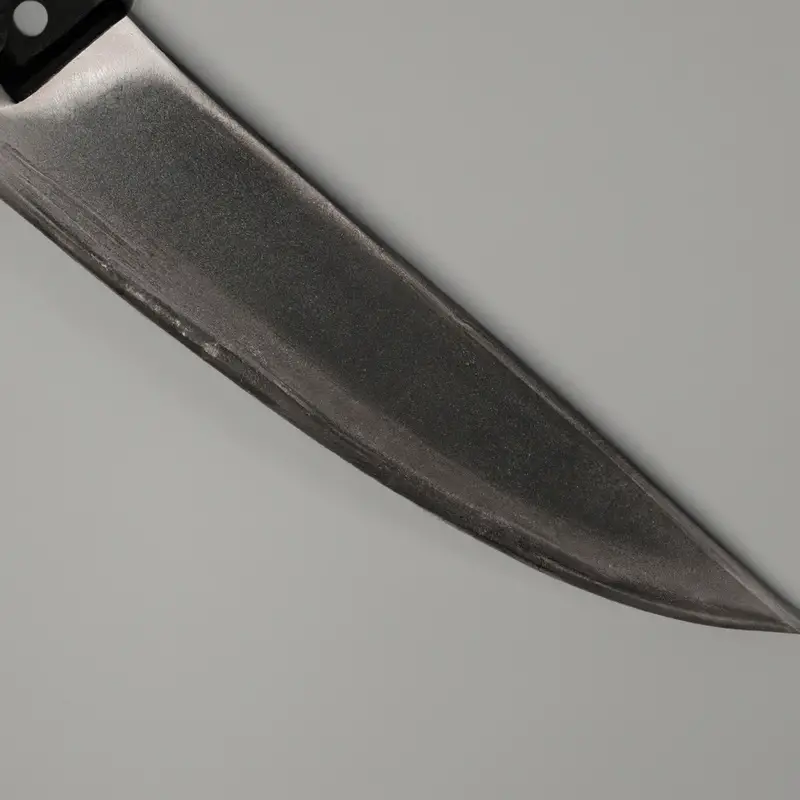
Final Verdict
Transporting chef knives safely is not only crucial for protecting your knives from damage but also for ensuring the safety of those handling them. Proper storage and securing techniques, as well as appropriate cleaning and maintenance, are key to keeping your knives in top condition during transportation.
By following the tips outlined in this article, you can have peace of mind knowing that your knives are safely transported and will be ready for use when you arrive at your destination.
Remember to invest in a quality knife bag and consider insuring your valuable knives for added protection. With these measures in place, you can confidently transport your chef knives wherever your culinary adventures take you.

